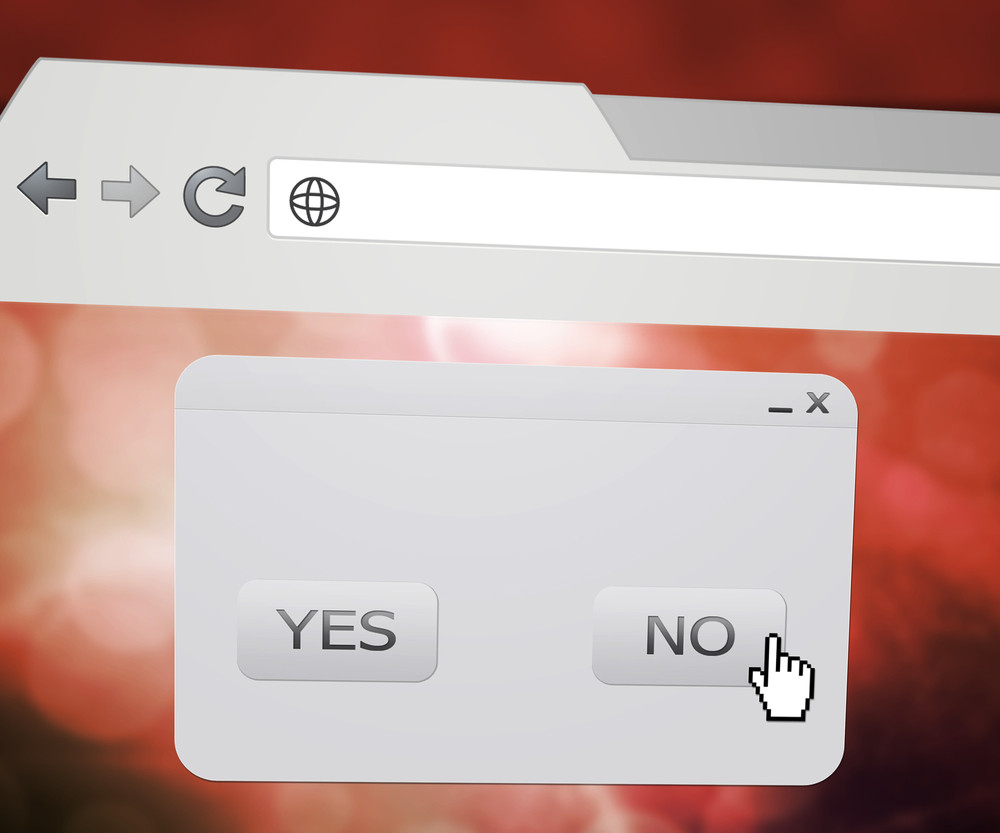There’s no doubt that website design services have changed a lot over the years. Features that were once trendy have since fallen out of favor — and what used to seem like harmless, accepted practices are now frowned upon. That’s why it’s so critical to ensure that custom websites are maintained and updated regularly; when they aren’t, they’ll often need repairs within one or two years.
But even if your site has been updated recently, it might have some features that could frustrate visitors (or even search engines!). For instance, interstitial ads are fairly prevalent in web design but can actually harm websites, in certain cases. Let’s take a closer look at these specific on-site digital ads and why you might need to take action in order to appease both customers and Google.
What Are Interstitial Ads?
You might not be familiar with the terminology, but you’ve likely seen these ads before when casually browsing the web. Interstitial ads are on-page advertisements that cover the entire viewing screen. While prestitial ads show up before you ever get to view the homepage, interstitial ads pop up in the middle of the viewing experience. They can emerge on static pages or in video media, often between viewing different webpages, playing different levels of games, or navigating through different screens of a mobile app. Unlike old-school pop-up ads, which usually covered only a portion of the web content, interstitial ads are designed to cover the entire page and are especially prevalent on mobile sites. They’re essentially meant to act as transitions between different stages to the benefit of the site or app owner.
Why Are Interstitial Ads Used?
Interstitial ads are often included in website design services because they have a high rate of interaction. In order to navigate away from the ad and resume engagement with the content itself, the user must either close the ad manually or click on some part of the ad to follow through with that desired action. An interstitial ad might be used to promote other content on the site, encourage users to sign up for a newsletter or service, capture contact information in order to provide a discount, or promote a sponsor. In some situations, interstitials stay up for an allotted amount of time before the user can navigate away from them. Generally speaking, they do have a fairly high click-through rate because they’re obtrusive by nature. But in many cases, the payoff may not always be worth the risk.
Should Websites Eliminate Interstitial Ads?
The bottom line is that interstitial ads cause a lot of frustration for users. You may already know why you need a mobile friendly website, but interstitials are especially problematic for mobile users because they’re even more difficult to click out of. Even on a desktop or laptop, however, interstitials are considered to be annoying — so much so that Google has penalized (or at least threatened to penalize) websites that use them. Because interstitials are so invasive and are literally designed to disrupt the user experience, it’s no wonder that Google isn’t a big fan of them.
This isn’t to say that you should never use interstitial ads. But it’s worth exploring your reasons behind wanting to include them as part of your website design services package. You and your web designer should ensure you’re being compliant with Google’s policies if you do decide to use them. Namely, you should make sure that these ads are easy to close on all devices and that they appear between natural pauses in the user experience (like transitioning between articles or blog posts). For best results, these ads should load quickly, be used sparingly, and not interfere with the overall user experience.
Whether you’re already using interstitial ads or you want to learn more about whether they’re right for your business, be sure to consult our website design services team before incorporating on-site ads into your marketing strategy. With our professional guidance and skill, you can feel confident that your site will offer what your customers need — and nothing they don’t want to see.

